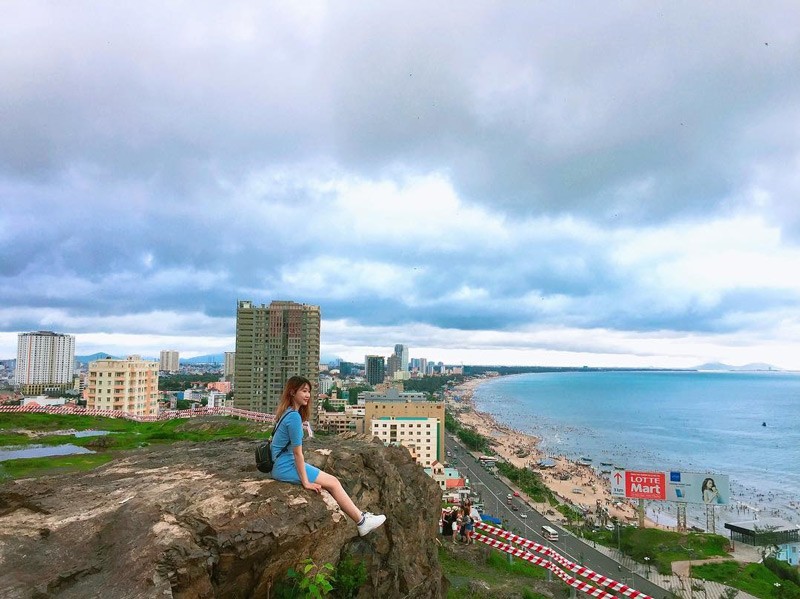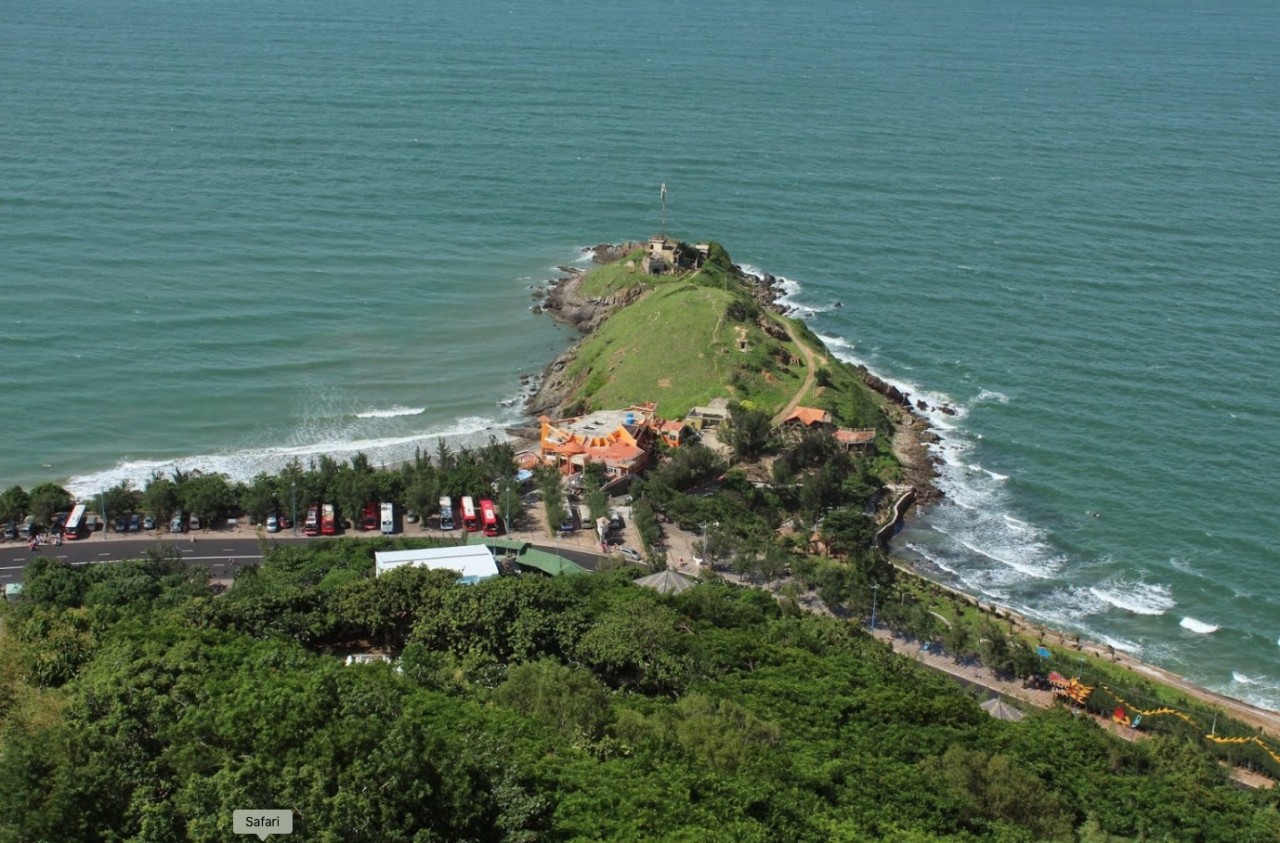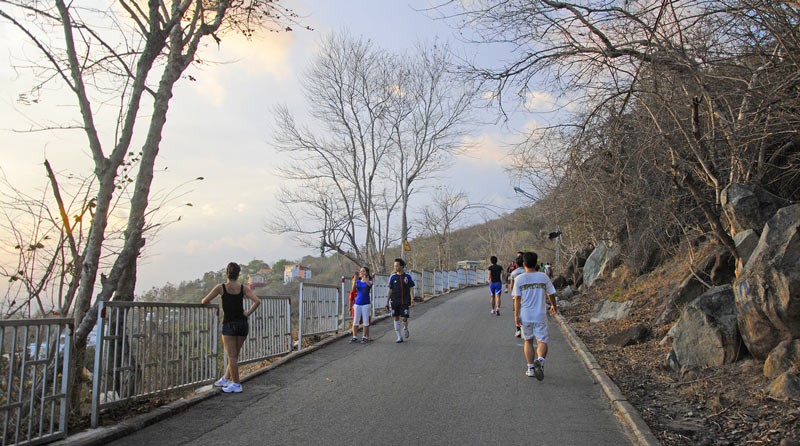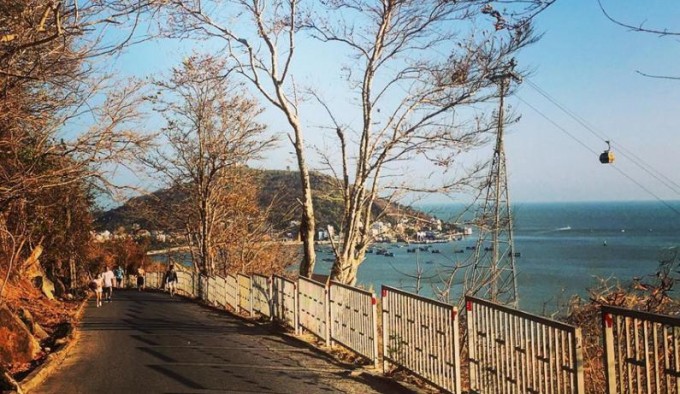Enjoying the great outdoors at five of Vung Tau's most breathtaking destinations
When you visit Vung Tau, you will have access to a wide variety of exciting attractions and activities. If you want to get your fill of Vitamin Sea in the southern part of Vietnam, you should probably make this your first stop. Whether you are someone who spends a lot of time at the beach or not, there are still a lot of beautiful places you can visit and interesting activities you can do. It might be challenging to decide when and where to go as well as what to do with one's time.
Vung Tau is a city on the coast of Vietnam that is most well-known for its proximity to Saigon and its nice beaches. However, in addition to that, it may also provide other benefits. As a native of the area, I believe that Vung Tau is the kind of place that would be great to come if you are looking for a place to engage in solitary self-reflection, if you want to reestablish your connection with nature, or if you simply want to take a deep breath of fresh air. Keeping this in mind, you could pay a visit to these less well-known spots in Vung Tau in order to enjoy your inner self at free cost
Pig Hill

Pig Hill, the location that its name awakens the curiosity for, and interests to explore the nature at Bai Sau, District 2, Vung Tau, is a must-see attraction for travelers that visit Vung Tau at least once. In addition to Ho Tram and Ho Coc..., the Pig Hill is quickly becoming a tourism phenomenon in the hearts of young people. This is due to the fact that the Pig Hill is the ideal destination to admire some of the most wild and beautiful scenes and discover a completely new, unique, and strangely beautiful side of Vung Tau.
When visitors arrive and see nothing but a barren hill, they could be confused about what to do with themselves. However, when they get closer to the brow of the hill, they will be greeted by a breathtaking view of a long sandy beach that curves gently into the water and a clear blue sky above them. This view will not disappoint. As a result of this, Pig Hill is regarded as the city's land equivalent of a lighthouse. At the peak of the hill, visitors will get a panoramic view that includes the entirety of Thuy Van Road, as well as a portion of Ha Long Road and Hon Ba Island in the distance. The sensation of standing on a high hill, looking down at the cold breeze, and taking pleasure in the moment of tranquility is one that will not soon be forgotten in this location. The gravel road up the hill provides a means by which vacationers can access a genuine paradise.
It's fascinating to see how the different seasons give the slopes of the hills their own unique charm. During the dry season, the pig hill is covered in stones, making it an area that is both wild and mysterious, perfect for exploration. In the event that tourists come to this location during the wetter months, they will have the chance to view the naturally occurring green area along with the stunning plant gardens. This is also the best location in all of Vung Tau to capture the enchanted image of the sun rising or setting over the area there.
Nghinh Phong Cape

The tip of the Vung Tau peninsula known as Nghinh Phong Cape may be found in the peninsula's southwestern region. It is called Nghinh Phong, which translates to "Cape of Greeting the Wind," because this location always makes the most of the wind that blows across it. This peninsula is responsible for the formation of two beaches: Huong Phong Beach and Vong Nguyet Beach, which are located in two enormous bays to the east and west, respectively. It is highly revered and one of a kind thanks to the enormous white statue of the Kito God, who is reaching out his arms to draw the entire ocean to his bosom.
Not only does Nghinh Phong Cape present an exceptionally attractive and calm beauty, but also because of its deep blue water and magnificent mountains and forests, people find themselves unable to move from where they are standing. In the shadow of the coast are breathtaking mountains and shaded trees, which together create an atmosphere of calm and relaxation. As soon as you step foot in the coastal city of Vung Tau, this cape transforms into a tourist hotspot that absolutely cannot be missed due to its picturesque sceneries and one-of-a-kind tranquil spaces.
Vung Tau City's Nghinh Phong Cape may be found at the number one spot on Ha Long Street. Because of its proximity to the Kito God statue that has its arms held out and the Vong Nguyet beach, the cape's location is quite straightforward and easy to pinpoint. Following Le Hong Phong Street from the martyr's memorial in Vung Tau, tourists can make their way to Sau beach, where they can make a right turn into Thuy Van Street. Tourists keep walking along Thuy Van Street in the direction of the statue of the Kito God in order to go to Nghinh Phong Cape.
The entrance to Heaven Gate may be found directly on Nghinh Phong Cape. Travelers are going to have to go down a path in order to get to the Heaven Gate. Every traveler who comes to the coastal city of Vung Tau wants to make it to Heaven Gate, even if the road there is fairly challenging to navigate.
The trip to Nghinh Phong Cape should be made on a motorbike since Thuy Van Street is one of the two most beautiful coastal roads in Vung Tau, and tourists will be traveling on one of these roads. Renting a motorbike is another option for tourists looking to go around the Nghinh Phong Cape area, with daily rates ranging from 100,000 to 200,000 Vietnamese Dong.
Near the cape of Nghinh Phong, the city of Vung Tau is home to a number of tourist attractions, including the Kito God statue, Vong Nguyet beach, Dua beach, the Vung Tau lighthouse, and a number of other beaches and lighthouses.
Trailing along the mountain

One of the most well-known destinations for tourists in Vung Tau is the Tao Phng Mountain, also known as the Small Mountain. The forest cover to the south of the bay extends all the way down the slopes of this hill, which is 197 meters in height and covers an area of 120 hectares.
Two historical sites, which draw a significant number of visitors each year, may be found at the summit of the mountain. These well-known destinations for tourists are the Statue of Christ and a Lighthouse, both of which were constructed during the time of French colonial rule. At the base of the mountain, within walking distance of a number of establishments, including hotels, cafes, and restaurants, that are frequently visited by tourists from all over the world.
There is a short and peaceful path that leads to an area that is densely forested, giving the impression that you are in a little jungle when you arrive there. Along the path, there are a few Buddhist temples that you can visit to pause and take in the scenery of Bai Da or Mi Nghinh Phong. You will need to retrace your steps in order to leave the trail, as there is only one way out.
When you reach the end of the route, you will see a road that has been recently paved and will lead you to another opportunity to connect with nature. If you're very fortunate, birds will sing to you as you travel along the path, welcoming you with their lovely songs. You will be able to locate a secluded area here where you may watch the sunset. The way out follows the same path that you came in on, just like the previous trail did.
Big Mountain

When arriving in Vung Tau from Ho Chi Minh City via hydrofoil ferry, this well-known monument is typically the first thing that tourists see (Saigon). It is not so much for its height as it is for the fact that its four peaks spread back from Front Beach for many kilometers along the west side of the Vung Tau peninsula. This is the primary reason why it is referred to as "Big Mountain."
The summit can be reached via a dizzying variety of hiking routes, each of which presents its own unique challenges. The asphalted bitumen road is the easiest, and it's the one that residents of the area use to exercise on a daily basis. The ascent up the side of the mountain, which consists of multiple "extremely steep" climbs, as well as the entry to the fishing town, which consists of over 600 stairs, are the most difficult parts of the hike.
The vistas from atop Big Mountain are breathtaking. You can get a view of Vung Tau Bay and the Front Beach area, as well as the area across to Small Mountain, from the southern side of the mountain.
The shipyards come into clearer focus as you walk around to the western side of the island. Then, if you continue along the slope in an easterly direction, you will get breathtaking views over the residential section of Vung Tau City.
On the summit of the mountain lies a big theme park that can be reached by cable car as well as an ancient radar antenna that is no longer in operation. Local businesses and homes, in addition to numerous temples and pagodas, including the well-known "Goddess of Mercy" monument, are dispersed across the slope of the hill (sometimes mistaken by tourists for the Virgin Mary).
The fact that the battery of historic French cannons is not far from the major access road makes it quite popular with the locals. In addition, the location offers an intriguing "water stop" for Hashers on their way to the summit of the mountain.
Con Dao Island

The Con Dao Islands, often referred to as Con Dao National park, are an archipelago consisting of 16 mostly uninhabited islets located close off the shore of Vietnam's southernmost coast. Each of these islets features extensive beaches that are shaded by evergreen trees. The main island is ideal for seasoned travelers who are searching for a getaway from the hustle and bustle of city life because it features miles of coastline roads, hiking trails, and a broad variety of other outdoor activities.
The largest and only inhabited island, Con Son was historically the location of prisons maintained by the French for Vietnamese nationals who were active in the independence movement. The majority of the abandoned jails can be found in Con Son Town, and there, in addition to the notorious tiger cages, the cells themselves can be explored. Many of the island's residents make the journey to Con Son in order to pay their respects to revolutionary figures like Vo Thi Sau, who was the first woman on the island to be put to death by the French.
Aside from this desolate region of Con Son, the island is home to a wealth of pristine beaches where visitors may spend the day basking in the sun, swimming in the water, and feasting on freshly caught seafood. Bai An Hai Beach is located in close proximity to the town and serves as a link between Ben Dam Harbour and a number of seaside resorts and fishing communities. Rent a motorcycle and head south toward Mui Ca Map (also known as Shark Cape) and Nhat Beach to take in the pristine white sands and spectacular views of the water if you'd rather not be bothered by other tourists.
Island-hopping and scuba diving are two of the most popular things to do on the Con Dao Islands. Here, you may discover the majority of the uninhabited islets and see a wide variety of marine species, including stingrays, barracudas, moray eels, and dugongs. Because it is a national park, you are need to make all of your travel arrangements through the Con Dao National Park Headquarters (29 Vo Thi Sau, Con Dao District, Ba Ria - Vung Tau Province). If you go to Hon Bay Canh Island between June and September, you will have a good opportunity of seeing turtles lay their eggs because the island is famous for being a breeding area for turtles. If you visit between those months, you will not be disappointed.
